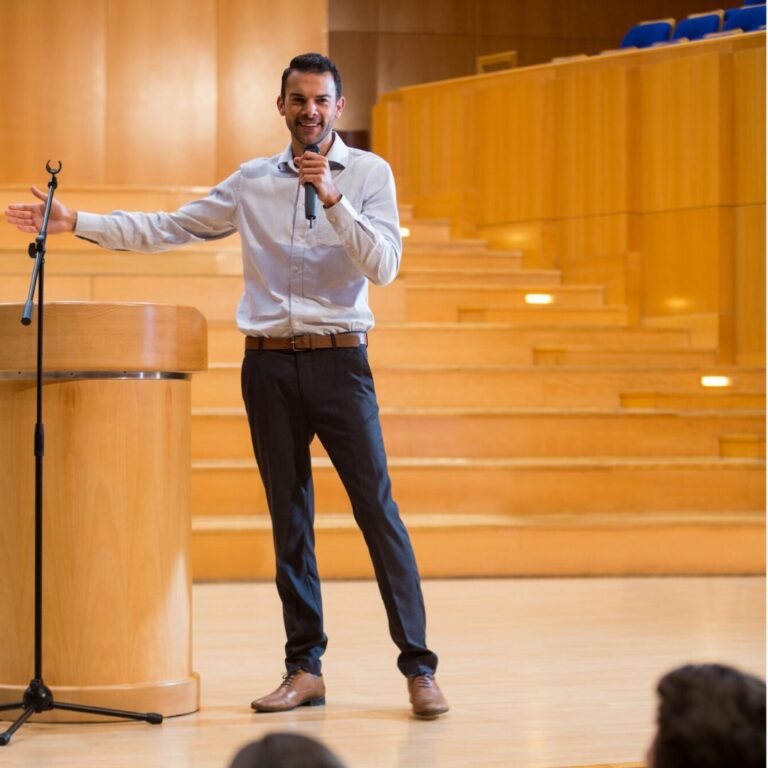
- Home
- Master IELTS Speaking Part 2: Fluency and Coherence Strategies
- Shelby Academy
- 0 Comments
- January 24, 2025

Master IELTS Speaking Part 2: Fluency and Coherence Strategies
IELTS Speaking Part 2, also known as the “long turn,” requires candidates to speak for 1-2 minutes on a given topic using a cue card. It tests your ability to organize ideas, speak fluently, and maintain coherence. Achieving fluency in this part of the test is crucial, as hesitation, repetition, or an inability to sustain your speech can lower your score. Fluency isn’t just about speaking quickly but also about speaking smoothly and naturally while effectively conveying your ideas. This guide will provide actionable tips to help you improve your fluency, prepare for a wide range of cue card topics, and succeed in this part of the test with confidence.
Understanding IELTS Speaking Part 2
The Structure of IELTS Speaking Part 2
In Part 2, you are given a cue card with a topic, including three or four bullet points to guide your response. After one minute of preparation, you must speak for up to two minutes. For example, a cue card might ask you to describe a memorable trip, a favorite book, or someone who inspires you. The examiner will assess your fluency, coherence, vocabulary, grammar, and pronunciation. To excel in this section, you need to stay focused, organize your ideas logically, and speak without long pauses.
Key Challenges in Part 2
Many candidates struggle with fluency due to nervousness, a lack of vocabulary, or difficulty organizing their thoughts. Others may feel they don’t have enough to say about the topic. Overcoming these challenges requires practice and strategies to maintain a steady flow of ideas.
Importance of Fluency
Fluency is one of the most critical factors in this part of the test. It demonstrates your ability to communicate ideas effortlessly, without frequent stops or fillers like “um” and “uh.” While minor pauses are natural, frequent hesitation can disrupt the flow of your speech and affect your band score.
Practice Speaking Without Overthinking
Shadowing Technique
The shadowing technique involves listening to native speakers and repeating what they say as closely as possible. You can use podcasts, YouTube videos, or audiobooks to practice this. By mimicking their speech patterns, intonation, and pace, you develop a more natural rhythm, which enhances your fluency.
Time Yourself
Set a timer for two minutes and practice speaking on a specific topic within this timeframe. This helps you get used to the duration of Part 2 and trains you to manage your time effectively. Avoid stopping to think about grammar or word choice; focus on maintaining a steady flow of speech.
Expand Your Ideas
To keep speaking fluently for two minutes, learn to expand your ideas. For example, if the cue card asks you to describe a gift you received, don’t stop after mentioning what it was. Talk about who gave it to you, why it was meaningful, how you felt when you received it, and how you use or remember it today. Adding details and personal stories makes your response engaging and ensures you have enough to say.
Organize Your Thoughts Clearly
Outdoor vs. Indoor Activities
Coherence is essential for fluency. Use a logical structure to organize your response, starting with an introduction, followed by details, and ending with a conclusion. For instance, if describing a memorable event, begin with an overview of the event, then describe the people involved, the activities, and why it was significant.
Use Linking Words and Phrases
Linking words like “firstly,” “moreover,” “however,” “in addition,” and “finally” help you transition between ideas smoothly. For example, “Firstly, I’d like to talk about where the event took place. Moreover, it was a very special day for me because…” Using such phrases makes your speech sound more organized and fluent.
Practice Storytelling
IELTS Part 2 often involves describing events or experiences, making storytelling a valuable skill. Practice narrating stories with a beginning, middle, and end. For instance, when talking about a trip, start by describing the destination, the activities you did, and end with how you felt about the experience. This approach helps maintain fluency and coherence.
Use Topic-Specific Vocabulary
Avoid Overcomplicating Your Language
While it’s important to use advanced vocabulary, avoid overcomplicating your language with rare or unfamiliar words. Focus on clarity and accuracy. Simple, well-structured sentences are often more effective than complex ones filled with errors.
Learn Collocations
Collocations, or natural word pairings, make your speech sound more fluent. For example, instead of saying “very big,” you could say “huge success.” Instead of “do exercise,” say “work out.” Learning these common pairings helps you speak more naturally.
Practice Paraphrasing
Paraphrasing is a useful skill when you need to rephrase ideas to fill time or elaborate. For example, if the cue card asks about your favorite movie, you can say, “One of the movies I absolutely adore is…” and later rephrase it as, “A film that really resonates with me is…” This keeps your speech varied and fluent.
Overcoming Common Fluency Barriers
Avoid Overthinking
Overthinking about grammar or word choice can interrupt your speech. Instead, focus on communicating your ideas clearly. Remember, the examiner is more interested in your ability to convey meaning than in grammatical perfection.
Use Fillers Wisely
While fillers like “well,” “you know,” or “let me think” can help you buy time, avoid overusing them. Instead, practice pausing briefly to collect your thoughts before continuing. This appears more natural and confident than excessive fillers.
Focus on Pronunciation
Fluency is closely tied to pronunciation. Mispronouncing words can disrupt the flow of your speech. Practice enunciating clearly, focusing on stress and intonation patterns. Listening to native speakers and repeating after them can help improve your pronunciation and overall fluency.
Conclusion
Fluency in IELTS Speaking Part 2 is key to demonstrating your ability to communicate ideas effectively and naturally. By practicing regularly, using strategies to organize your thoughts, and building a rich vocabulary, you can speak confidently and achieve success in this section. Remember, fluency isn’t about speaking quickly but about speaking smoothly and maintaining coherence. With consistent effort and the tips shared in this guide, you’ll be well-prepared to tackle any cue card topic and achieve a high band score.
Section Title
Confidence Exercises for English Speaking Speaking English confidently can be a challenge for many...
Tips for Confident English Conversations Speaking English with confidence is essential for effective...
Overcome Fear of Speaking English Enhance your English communication skills to impress clients and...
Impress Clients with English Communication Enhance your English communication skills to impress...
Ace Job Interviews with Business English Boost your confidence and excel in job interviews with...
Negotiate Successfully in Business English Master the art of negotiation in Business English! Learn...
Network Effectively with Business English Learn to network effectively using Business English!...
Polish English for Presentations Delivering a presentation in English requires clarity, confidence...
Key Business English Phrases for Professionals Effective communication in the business world...










